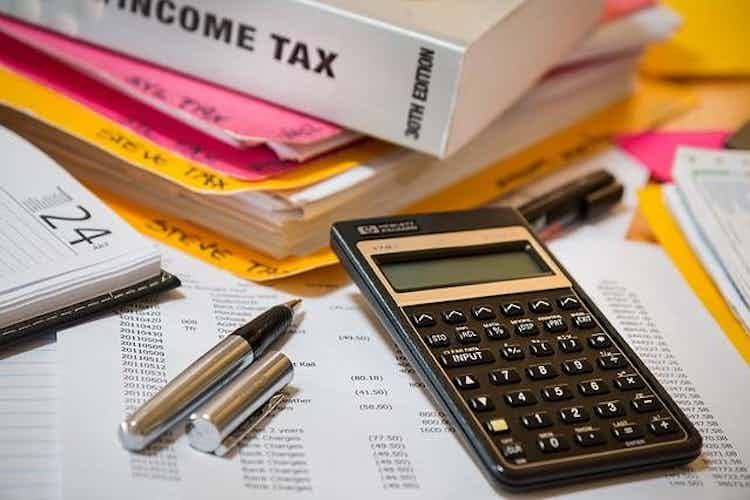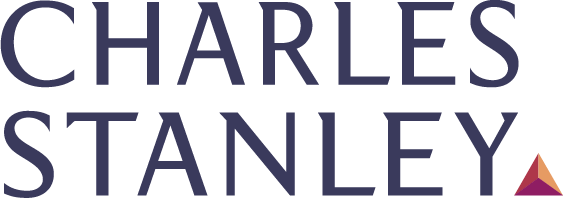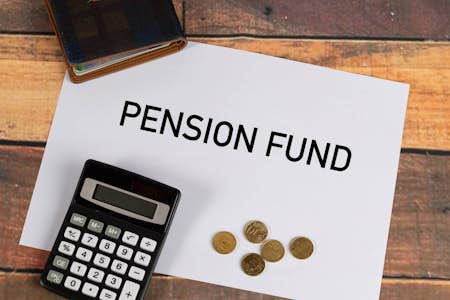There are three central taxes which are capital gains tax, income tax and inheritance tax. These can relate to your personal finances or business finances. Business tax planning has increased in recent years as more people choose self-employment and working through their own companies. So, not only do you need to undertake planning for your personal taxes, but you may also need to consider business-related taxes. Where do you start?
This article will look at ways of mitigating your personal tax liabilities. We will cover the often complicated subject of business taxation in a separate article.
What is tax planning, and is it important?
This area of personal finance certainly comes under the guise of failing to prepare, prepare to fail. Unfortunately, whether looking at personal finances or business finances, many people leave it too late to take advantage of the various tax allowances and legal tools available. It is never too soon to begin tax planning, just as it is never too soon to start saving for your pension.
You will need the assistance of a qualified financial adviser to implement a long-term and fluid tax planning strategy. It is important to remember that tax regulations do change regularly, as do allowances and other offsets. It would be best if you took full advantage of any assistance available to you. How often do you get a gift from the tax authorities?
What is personal tax planning?
As we touched on above, there are three main types of taxes that you can control (to a certain extent). Historically, some providers of tax advice sailed a little too close to the wind and were caught by the tax authorities. This prompts the question; why not simply ask the tax authorities if a particular scheme or action is allowed?
If only it were that simple. The standard reply from HMRC when enquiring about an action that may impact your taxation is to try it, and then the authorities will make a ruling. The potential risk of those activities which abide by the letter of the law, but maybe not the spirit of the law, stops many people from taking action. In some cases, we have seen retrospective regulations introduced by HMRC. Be very careful - and speak to Financial Conduct Authority (FCA) regulated professional tax planners for advice and guidance.
Personal capital gains tax (CGT) planning
There are numerous ways to mitigate your capital gains tax (CGT) without falling foul of the authorities.
Using your capital gains tax allowance
Individuals in the UK have an annual capital gains tax allowance which currently stands at £12,300 per annum. This allows you to make capital gains of £12,300 per year without incurring capital gains tax. It is important to note that this is a "use it or lose it" allowance that you cannot carry forward.
In effect, you can double this allowance if you have a spouse or a partner with whom you live. Technically inter-spouse/partner transfers are exempt from capital gains tax. However, it is essential to take professional financial advice before completing any transfers. In theory, your partner would also inherit your base cost and, therefore, may be liable for capital gains tax on any profit.
Offset losses against gains
If you were to crystallise losses and gains in any individual tax year, the figure on which you would be charged capital gains tax is the net result. For example:
Tax year 2020/21 | Gain/loss |
Sale of shares in ABC company | £14,300 |
Sale of shares in XYZ company | (£2,000) |
| Net gain | £12,300 |
Without the loss on the sale of XYZ company shares, there is a gain of £14,300 for the tax year. The £2000, over and above the capital gains tax allowance of £12,300, would be added to your income and taxed accordingly. However, the loss on the sale of XYZ company shares brings the net gain for the tax year down to £12,300. This is covered by the capital gains tax allowance, with no additional tax to pay.
Manage your taxable income levels
Any capital gains over and above your annual allowance are added to your income and taxed accordingly. If, for example, you earned £50,270, this would be the higher limit for the 20% basic rate of tax. Therefore, a capital gain of £5000 would be taxed at the higher band, which is 40%. There are two specific ways in which you can reduce your taxable income levels, which are:
- Pension contributions
- Charitable donations
Take professional financial advice before completing your tax return. You may be able to manage your income tax levels and reduce your liability.
Utilise your ISA allowance
UK residents currently have an annual ISA allowance of £20,000 per UK tax year. This means that you can contribute £20,000 per annum to an ISA where capital gains are free of tax. A couple will be able to utilise a combined allowance of £40,000 per annum. Over several years this can shield a significant amount of money from future capital gains tax. We regularly see older ISAs valued in the hundreds of thousands of pounds, potentially mitigating vast amounts of tax in the future.
Personal income tax planning
When looking at personal income tax planning opportunities, it is crucial to take advantage of any allowances and actions to reduce your tax bill. There are several ways in which you can mitigate your income tax obligations. We have put together a selection of tips that may help to reduce your tax liability.
Are you on the correct tax code?
It may surprise you to learn that quite often, people are on the wrong tax code for their circumstances and, consequently paying the wrong amount of tax. There are several different tax codes, and yours can change from year to year for various reasons. It may be that you have overpaid in the previous tax year, or perhaps underpaid. As a consequence, your personal allowance is adjusted.
The more common tax code for the tax year 2021/22 is 1257L.
The L replaces a zero which in this situation indicates a tax-free allowance of £12,570 per annum. The letter following the numbers can also change depending on your particular scenario. It is essential to ask the question of your financial adviser. Are you using the correct tax code?
Consider maximising tax relief on pension contributions
We know that pension schemes are the most tax-efficient method of saving for retirement and protecting your funds from capital gains tax. To encourage more people to join workplace pensions or take out private pensions, you will receive tax relief on your pension contributions.
While there are slightly different tax bands in Scotland, we will look at the rest of the UK as an example of tax relief on pension contributions. The current tax bands are as follows:
- Basic rate tax 20%
- Higher rate tax 40%
- Additional rate tax 45%
For example, if you made a net pension contribution of £80, and you were a basic rate taxpayer, £20 would have been taxed at source. In this scenario, the government would repay the £20 income tax into your pension scheme as a contribution. If you were a higher rate taxpayer, you would receive a 40% refund which equates to £40 per every £60 pension contribution. Similarly, those on the additional tax rate would receive £45 for every £55 paid into their pension.
There is a limit of £40,000 per year in pension contributions, after which the contributions will be taxed at your highest rate of income tax. However, when you bear in mind that these funds are often invested for more than 30 years, the tax rebate can make a massive difference to your investment returns and retirement pot.
Transferring part of your tax-free allowance
While it is known as the “marriage allowance”, this relates to spouses and civil partners. If we take the current tax-free allowance of £12,570, you would be able to transfer a maximum of 10% to your spouse/partner using your marriage allowance. As a consequence, they will be able to earn an extra £1257 without paying any tax.
As a basic rate taxpayer, paying 20% income tax, this equates to a saving of £251 per annum. The "marriage allowance" is one of the more underused allowances and something you should consider when reviewing your finances with your financial adviser.
Personal inheritance tax (IHT) planning
We have seen some significant changes in the area of inheritance tax in recent years. While it is still essential to make full use of your allowance and utilise tax-free vehicles, there are two inheritance tax-related allowances to consider.
Inheritance tax nil-rate-band
The inheritance tax nil-rate-band currently stands at £325,000. This means that your estate will pay no inheritance tax if valued at no more than £325,000 on your death. Where your estate is valued over the nil-rate-band, there would be a 40% charge on the excess.
So, for example, if your estate was worth £500,000, the breakdown would be as follows:
- Inheritance tax nil-rate-band = £325,000
- Excess = £175,000
- Tax 40% on £175,000 = £70,000
When you consider the considerable rise in property prices in recent years, many people have been forced to sell their family home to pay inheritance tax. As a means of allowing family homes to be retained by direct family members, the government introduced the main residence allowance.
Main residence allowance
The main residence allowance was £100,000 on inception in the 2017/18 tax year. We have seen year-on-year increases, and it now stands at £175,000 for the 2021/22 tax year. A recent announcement by the UK government confirmed this allowance (along with many others) would be frozen until at least the 2025/26 tax year. How does the main residence allowance work?
So long as your property is passed to direct descendants - children, stepchildren and grandchildren - there is additional protection of £175,000. This means that if you had assets, excluding your family home, valued at £325,000, and the family home was valued at £175,000, there would be no inheritance tax liability. This equates to an inheritance tax saving of £70,000 and allows your direct descendants to retain the family home.
At the moment, inter-spouse/civil partner transfers are free of inheritance tax on death. The surviving partner can also receive any unused inheritance tax/main residence allowance from their partner. In theory, a surviving partner could inherit a total of £500,000 in tax-free allowances, which, together with their own allowances, equates to a figure of £1 million. There is the proviso that the family home is passed to direct descendants, as mentioned above.
Reducing long-term inheritance tax liability
Aside from the two main allowances, you can also utilise several other allowances/investment vehicles, including:
- Lifetime gifts
- Potentially exempt transfers
- Gifts with reservation
- Trusts
- Business asset exemption
As many of these are annual entitlements, it is crucial to take tax advice from your financial adviser. They can help you plan, distribute parts of your wealth while alive and demonstrate the impact this will have on your inheritance tax liability.
It’s never too early to start planning ahead
Unfortunately, many people only consider ways in which they can mitigate taxation as they approach retirement. The reality is that it is never too early to start planning regarding capital gains tax, income tax and even inheritance tax. The more of your funds you can shelter under tax-free umbrellas, such as pensions and ISAs, the less tax you will need to pay. With the tax benefits of earning dividends not what they once were, you may need to take a different approach to protect your wealth for future generations of your family. There are also various allowances and expenses you can utilise to reduce your estate as you approach your later years.
You should review your finances regularly, taking a broader look at your investments, income, and expenditure.







